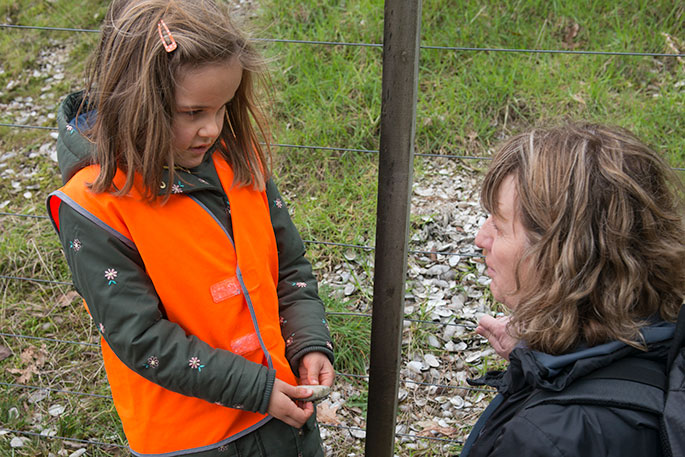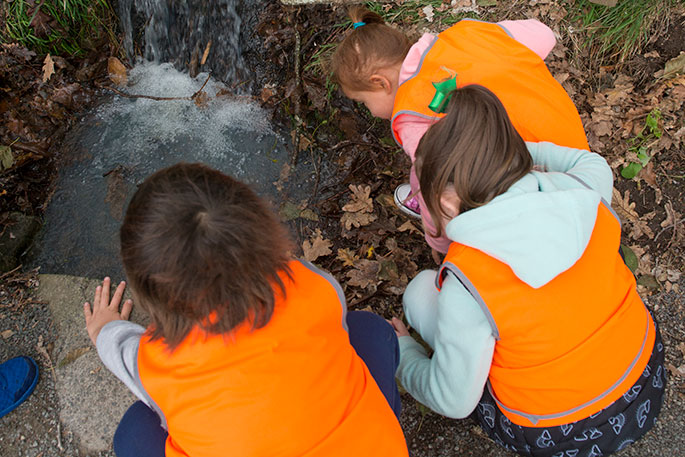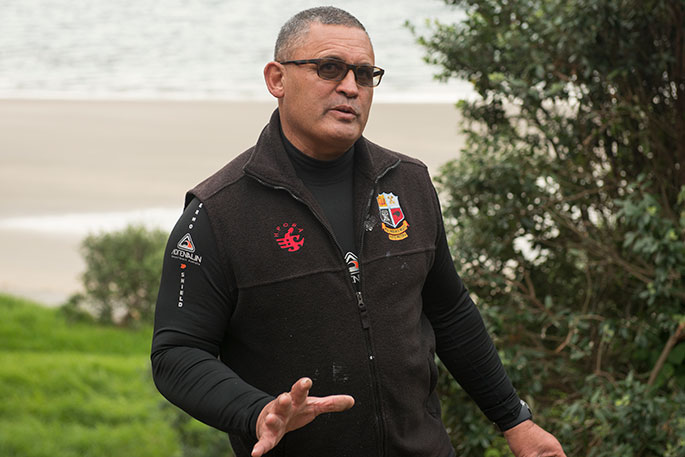Like many who live here, I often walk up or around Mauao, taking in the majestic views along with a healthy dose of sea air.
But even though I love a bit of history, I hadn't yet taken the time to find out any of the history of Mauao.
Along with a group of four-year-olds from Mount Plunket Preschool I had a chance to fix that this week with a navigated hikoi of some of the puna (springs) around Mauao with traditional navigator Jack Thatcher.
Jack is chair of Te Puna i Rangiriri Trust which is running a series of school workshops, evening lectures and navigated tours of Mauao this week to mark Matariki, the Maori New Year.
The week will culminate with a Matariki Market Day at the Mauao Campground on Sunday from 7am-3pm – a day for the whole whanau, including food stalls, entertainment and games.
Four-year-olds are a tough crowd, but the children are regular visitors to the maunga and Jack's easy-going manner easily won them over.
We started our hikoi in Waikorire (Pilot) Bay – Waikorire meaning ‘troubled waters', said Jack.
'There were battles in this bay. Unfortunately some of our tipuna fought each other and the troubles were over the water here.”

Sophie Barry, 4, from Mount Plunket Preschool shows some of the pipi shells she has found in the middens on Mauao to head teacher Catherine Rolleston.
We stopped to look at the old Stone Jetty, which was built in the 1800s for the pilot boats that assisted the ships into the Tauranga harbour, and the sand bar, which was once a main food source for the early Maori inhabitants of Mauao.
'You'll see plenty of middens on this side of Mauao, mainly filled with pipi shells from there,” said Jack.
The first puna we encounter on our hikoi is Waipatukakahu on the west side of Mauao. It looks like run-off but is actually a natural spring once used for washing clothes and soaking materials to make fibre.
'The maunga is one big reservoir so at this time of year it fills up and water slides down the hillsides. That's why we end up having slips. The springs are a release valve for all of that water,” said Jack.
The area around the puna is planted in oak trees but was once a karaka grove, which Jack would like to see restored.
'I'd like to see a nice place where people can come and sit and listen to the water under the canopy. It's a beautiful little spot. Hopefully one day it will be covered in karaka trees again.”
Further along the track we come to the sacred Te Kawa Waipuna where Jack plucks a discarded bottle from the base. Fortunately, he doesn't usually find much rubbish on the maunga.
Historically, Te Kawa fed two pools, one for birthing and another to bathe the bodies of the dead ready for burial, said Jack.
'It's quite lovely to think that you had that balance – death and life together. Creating new life and celebrating the old.”
The third puna we visit is Ruarapapari where a large slip about 20 years ago caused an enormous rock to roll down the mountainside and come to rest near the foreshore.
'Luckily no-one was on the path – that we know of,” jokes Jack.
This puna is likely to have had pools for drinking water and bathing.
'Because we have tapu about certain parts of our body we wouldn't bathe in pools that were about making things,” says Jack.
The current land instability on this side of the maunga is preventing any restoration, including planting, at the moment.

Connor Andersen, Mia Hampton and Rema-rae Guthrie from Mount Plunket Preschool explore the Waipatukakahu puna on Mauao.
The final puna on our hikoi is Te Puna Waitapu behind the Mauao Campground, also known as Waiparera's Well, which was a thermal pool and source of drinking water.
A puriri tree was planted near the puna earlier this week to mark the signing of the Mauao Historic Reserve Management Plan signed by the Mauao Trust, Tauranga City Council, and Ngā Poutiriao ō Mauao.
Improved signage providing more information about the history of the maunga is one of the first projects under the new plan.
In the meantime people can download the Arataki Cultural Trails app to hear stories about Mauao arataki.co
Jack's final Matariki hikoi to the summit of Mauao will depart from the campground at 5.30am tomorrow morning.



5 comments
Pilot Bay or Waikorire Bay
Posted on 14-06-2018 15:53 | By Murray.Guy
Pilot Bay or Waikorire Bay, might be a small name change that sends a big message - Waikorire Bay. Waikorire is the original Maori name for the area which extends along the beach front and the base of Mauao, where the present camping ground and hot pools are situated. The area is remembered for the musket war raids by Ngapuhi from the north. Armed with muskets they attacked Ngai Te Rangi, first in 1818 and then in 1820. Many Ngai Te Rangi were killed or captured and taken north. Why wait to be asked, why not offer?
since 2001
Posted on 14-06-2018 16:11 | By Captain Sensible
Maori.....celebrating and making a big deal of "matariki"......since 2001.
Funny that!
Posted on 14-06-2018 16:14 | By Captain Sensible
Funny how this maori "navigator" uses miles and latitude and speed even though maori never had such ideas. I wonder if a "maori nautical mile" just happens to be 1852 meters?? What are the odds?!
@ Captain Sensible
Posted on 15-06-2018 10:57 | By Crash test dummies
Way to sensible I am afraid, part maori claimed ownership of feet. miles and all things navigation ages ago!
@ Captain Sensible
Posted on 15-06-2018 10:58 | By Crash test dummies
The poms learnt it all from them dont you know. Why do you think there was a treaty written in English and transpated to part maori in 1840
Leave a Comment
You must be logged in to make a comment.